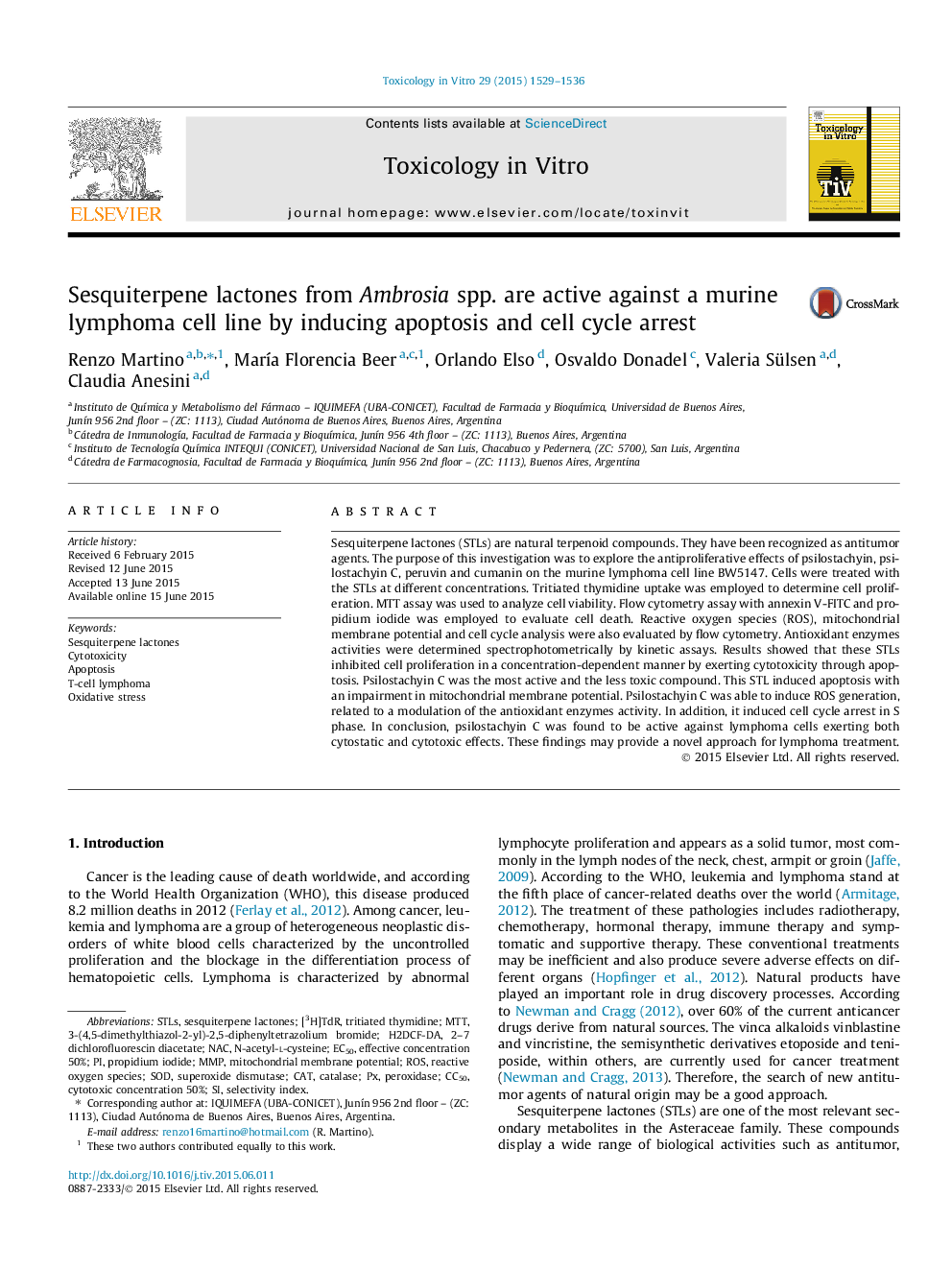| Article ID | Journal | Published Year | Pages | File Type |
|---|---|---|---|---|
| 5861378 | Toxicology in Vitro | 2015 | 8 Pages |
â¢Four sesquiterpene lactones from Ambrosia were active against BW5147 tumor cells.â¢Psilostachyin C was the most active and the less toxic compound from all tested.â¢This compound induced apoptosis, related to ROS generation.â¢Psilostachyin C also induced cell cycle arrest in S phase.
Sesquiterpene lactones (STLs) are natural terpenoid compounds. They have been recognized as antitumor agents. The purpose of this investigation was to explore the antiproliferative effects of psilostachyin, psilostachyin C, peruvin and cumanin on the murine lymphoma cell line BW5147. Cells were treated with the STLs at different concentrations. Tritiated thymidine uptake was employed to determine cell proliferation. MTT assay was used to analyze cell viability. Flow cytometry assay with annexin V-FITC and propidium iodide was employed to evaluate cell death. Reactive oxygen species (ROS), mitochondrial membrane potential and cell cycle analysis were also evaluated by flow cytometry. Antioxidant enzymes activities were determined spectrophotometrically by kinetic assays. Results showed that these STLs inhibited cell proliferation in a concentration-dependent manner by exerting cytotoxicity through apoptosis. Psilostachyin C was the most active and the less toxic compound. This STL induced apoptosis with an impairment in mitochondrial membrane potential. Psilostachyin C was able to induce ROS generation, related to a modulation of the antioxidant enzymes activity. In addition, it induced cell cycle arrest in S phase. In conclusion, psilostachyin C was found to be active against lymphoma cells exerting both cytostatic and cytotoxic effects. These findings may provide a novel approach for lymphoma treatment.
Graphical abstractDownload full-size image
